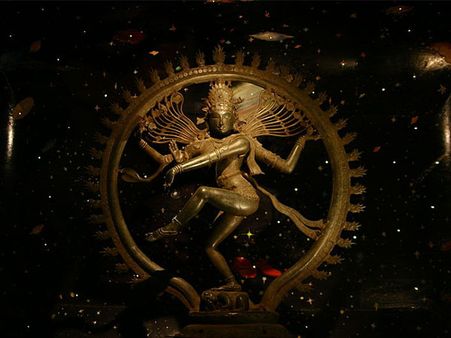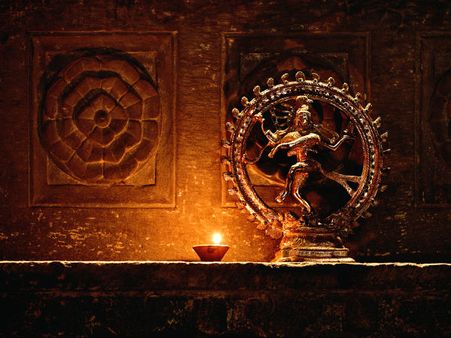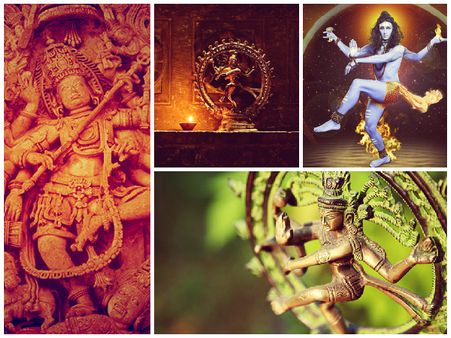Just In
- 23 min ago

- 4 hrs ago

- 6 hrs ago

- 7 hrs ago

Don't Miss
- Movies
 Mera Balam Thanedaar Star Shruti Choudhary Reveals The Kind Of Husband She Wants In Real Life
Mera Balam Thanedaar Star Shruti Choudhary Reveals The Kind Of Husband She Wants In Real Life - Sports
 Real Madrid vs Barcelona: Five Key Duels of EL CLASICO to Keep an Eye On
Real Madrid vs Barcelona: Five Key Duels of EL CLASICO to Keep an Eye On - News
 IPL 2024: Delhi Capitals DC vs Sunrisers Hyderabad SRH Preview, Pitch Report, Head To Head Record
IPL 2024: Delhi Capitals DC vs Sunrisers Hyderabad SRH Preview, Pitch Report, Head To Head Record - Automobiles
 Ola Electric Hits New Milestone – 500th Service Centre Opened In Kochi
Ola Electric Hits New Milestone – 500th Service Centre Opened In Kochi - Education
 Railway RPF Recruitment 2024; Apply Online for 4660 Post Vacancies @rpf.indianrailways.gov.in
Railway RPF Recruitment 2024; Apply Online for 4660 Post Vacancies @rpf.indianrailways.gov.in - Finance
 Elon Musk Postpones India Trip, Tesla's Indian Market Entry Delayed
Elon Musk Postpones India Trip, Tesla's Indian Market Entry Delayed - Technology
 Best Noise-Cancelling Earbuds Under Rs 5,000: CMF Buds Pro, Redmi Buds 5, Realme Buds Air 5, and More
Best Noise-Cancelling Earbuds Under Rs 5,000: CMF Buds Pro, Redmi Buds 5, Realme Buds Air 5, and More - Travel
 Journey From Delhi To Ooty: Top Transport Options And Attractions
Journey From Delhi To Ooty: Top Transport Options And Attractions
Significance Of Shiva Tandava
Dance is a divine art form. India has always been a land with diverse art forms and each of them unique in itself. One of the dance form happens to be the Tandava. Tandava is regarded as a celestial dance which is supposed to be performed by Lord Shiva.
Shiva's tandava is regarded as the source of cycle of creation, preservation and dissolution. The name Tandava comes from 'Tandu' who was an attendant of Lord Shiva, who instructed Bharata the use of Angaharas and Karanas, modes of the dance. Karana is the combination of hand gestures with feet to form a dance posture. Angahara is composed of seven or more Karanas.
Shiva's Tandava is said to be of two forms. The first is Ananda Tandava which denotes a happy dance and the second is Rudra Tandava which is the dance of destruction. Lord Shiva is referred to as the 'Nataraja' or the lord of dance.
Dancing, in Indian culture has been seen as a way to unite with the Creator. Shiva's dance is a symbol of being one with God through the divine act of dancing. This cosmic dance of Shiva is called 'Ananda Tandava,' meaning the Dance of Bliss, and symbolizes the cosmic cycles of creation and destruction.
Let us take a look at the forms and significance of Shiva Tandava.

Types Of Tandava
Scholars have found seven different types of Tandava. The tandava performed with joy is called Ananda Tandava and that which is performed in violent mood is called Rudra Tandava. The other types of tandava identified are Tripura Tandava, Sandhya Tandava, Samara Tandava, Kali Tandava, Uma Tandava and Gauri Tandava.

Legends Of Tandava
There are many legends associated with the Tandava. The first one is about a dwarf-demon called Apasmara. Apasmara was a dwarf who represented ignorance and epilepsy. In order to preserve knowledge in the world, Apasmara could not be killed. To do so would throw out the balance of knowledge and ignorance, as to kill Apasmara would mean attaining knowledge without effort, dedication and hard work. Hence, Apasmara grew extremely arrogant of his powers and went on to challenge Lord Shiva. It was then that Lord Shiva took the form of Nataraja and performed the famous Tandava or the dance of destruction, eventually crushing Apasmara under His feet.

Legends Of Tandava
The second legend of Tandava is associated with Goddess Sati. The Goddess emolated Herself in the yagna fire at Daksha's ceremony, following the insult upon Her husband, Lord Shiva by Her father. When Lord Shiva became aware of the incident, He became extremely furious. He sent out his fierce form, Veerabhadra to destroy the yagna. Veerabhadra destroyed Daksha's yagna and severed his head. After this, Lord Shiva was overcome with grief over the death of Sati. He took Her corpse on His shoulders and performed the Rudra Tandava. The universe came on the verge of destruction when Lord Vishnu intervened and with the help of His Sudarshan Chakra cut Sati's corpse into pieces to bring Lord Shiva to His senses.
Pic Courtesy:Yashima

Legends Of Tandava
The third legend is related to the Tandava being introduced to the mankind. The Gods & Goddesses pleaded Lord Brahma to create another veda which would be simple for the common man to understand. It is believed that considering this request Lord Brahma created the Panchamaveda, (fifth veda) which came to be known as Natyaveda, an essence of the other four vedas. It is believed that it has combined pathya (words) form the Rigveda, abhinaya (gesture) from the Yajurveda, geet (music and chant) from Samaveda and rasa (sentiment and emotional element) from Atharvaveda to form the fifth veda, Natyaveda.
Pic Courtesy:Soham Bannerjee

Legends Of Tandava
The third legend is related to the Tandava being introduced to the mankind. The Gods & Goddesses pleaded Lord Brahma to create another veda which would be simple for the common man to understand. It is believed that considering this request Lord Brahma created the Panchamaveda, (fifth veda) which came to be known as Natyaveda, an essence of the other four vedas. It is believed that it has combined pathya (words) form the Rigveda, abhinaya (gesture) from the Yajurveda, geet (music and chant) from Samaveda and rasa (sentiment and emotional element) from Atharvaveda to form the fifth veda, Natyaveda.

Legends Of Tandava
After creating this natyaveda, Lord Brahma gave it to sage Bharata and asked him to popularise this veda on earth. Following the words of Lord Brahma, sage Bharata wrote Natyashastra or the Science of Dramaturgy, a comprehensive work on the science and technique of Indian drama, dance and music. Bharatanatyam might have got its name from sage Bharata. It is the most revered work on dance till date.

Significance Of Shiva Tandava
The
dance
is
a
depiction
of
five
principal
manifestations
of
the
eternal
energy:
- Srishti- Creation
- Sthithi- Preservation
- Samhara- Destruction
- Tirobhava- Illusion
- Anugraha- Release
Tandava thus, symbolises the cosmic principles creation, preservation and destruction. It also symbolises the daily rhythm of birth and death.
-
 yoga spiritualityMaha Shivratri 2024: Four Prahars Of Maha Shivratri And Know Their Significance
yoga spiritualityMaha Shivratri 2024: Four Prahars Of Maha Shivratri And Know Their Significance -
 yoga spiritualityMaha Shivratri 2024: Best Mehendi Designs That Will Capture The Essence Of Mahadev, Videos Inside!
yoga spiritualityMaha Shivratri 2024: Best Mehendi Designs That Will Capture The Essence Of Mahadev, Videos Inside! -
 yoga spiritualityMaha Shivratri 2024: What Does Watching Lord Shiva And Things Associated With Him In Your Dream Mean?
yoga spiritualityMaha Shivratri 2024: What Does Watching Lord Shiva And Things Associated With Him In Your Dream Mean? -
 healthMaha Shivratri 2024: Lord Shiva's Favourite Food Items And Their Health Benefits
healthMaha Shivratri 2024: Lord Shiva's Favourite Food Items And Their Health Benefits -
 yoga spiritualityMaha Shivratri 2024: Avoid Making These Mistakes If You Want Happy Married Life Filled With Divine Grace
yoga spiritualityMaha Shivratri 2024: Avoid Making These Mistakes If You Want Happy Married Life Filled With Divine Grace -
 yoga spiritualityMaha Shivratri 2024: What Are The 19 Avatar Of Lord Shiva? Know The Meaning And Significance
yoga spiritualityMaha Shivratri 2024: What Are The 19 Avatar Of Lord Shiva? Know The Meaning And Significance -
 astrologyMaha Shivratri 2024: These Zodiac Signs Are Lord Shiva's Favourites, They Will Get Special Blessings
astrologyMaha Shivratri 2024: These Zodiac Signs Are Lord Shiva's Favourites, They Will Get Special Blessings -
 yoga spiritualityMahashivrati 2024: 20 Trendy Baby Boy Names Inspired by Lord Shiva
yoga spiritualityMahashivrati 2024: 20 Trendy Baby Boy Names Inspired by Lord Shiva -
 yoga spiritualityMahashivratri 2024: An Auspicious Yoga Will Form After 300 Years Will Bring Success And Prosperity
yoga spiritualityMahashivratri 2024: An Auspicious Yoga Will Form After 300 Years Will Bring Success And Prosperity -
 astrologyMaha Shivratri 2024: Know How Zodiac Signs Will Be Blessed By Lord Shiva On This Day
astrologyMaha Shivratri 2024: Know How Zodiac Signs Will Be Blessed By Lord Shiva On This Day -
 yoga spiritualityDo You Know The Founder Of Aghor Tradition? From Staying In A Crematorium To Living Up To 150 Years
yoga spiritualityDo You Know The Founder Of Aghor Tradition? From Staying In A Crematorium To Living Up To 150 Years -
 yoga spiritualityKaal Bhairav Jayanti 2023: Wishes, Greetings, Texts, Messages, Images, WhatsApp and Facebook Status
yoga spiritualityKaal Bhairav Jayanti 2023: Wishes, Greetings, Texts, Messages, Images, WhatsApp and Facebook Status


 Click it and Unblock the Notifications
Click it and Unblock the Notifications



